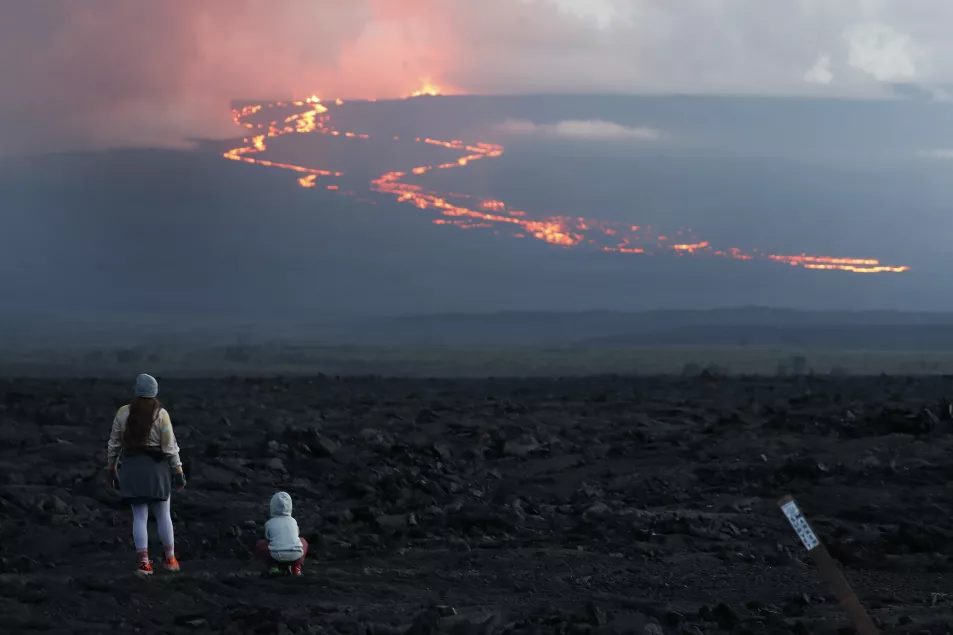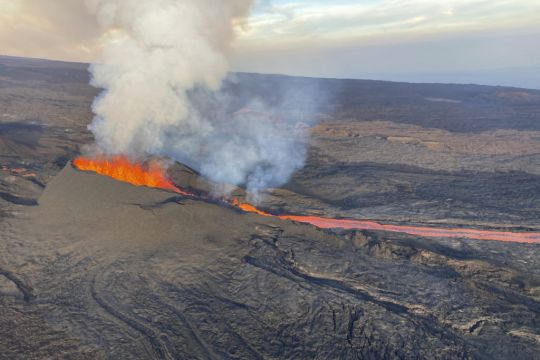Scientists have lowered the alert level for the Mauna Loa volcano on Hawaii’s Big Island from a warning to a watch, and said the mountain’s first eruption in nearly 40 years may soon end.
The US Geological Survey’s Hawaiian Volcano Observatory said in a bulletin that the eruption on the mountain’s north-east rift zone is continuing, but lava output and volcanic gas emissions are “greatly reduced”.

“High eruption rates will not resume based on past eruptive behaviour, and current behaviour suggests that the eruption may end soon,” the observatory said.
“However, an inflationary trend of Mauna Loa’s summit is accompanying the decreased activity and there is a small possibility that the eruption could continue at very low eruptive rates.”

Meanwhile, it said, a lava flow front has “stagnated” nearly two miles from Saddle Road, the vital road that residents and tourists use to travel between the city of Hilo on the east side of the island and coastal resorts to the west.
Scientists said earlier this week that the road is no longer under imminent threat from the lava, allaying previous fears that it could be cut off.

Mauna Loa began spewing molten rock on November 27 after being quiet for 38 years, drawing onlookers to take in the incandescent spectacle and making people who have lived through destructive eruptions nervous. For many Native Hawaiians, the phenomenon has a deep yet very personal cultural significance.
The observatory said its scientists are continuing to monitor the volcano closely, and flight restrictions remain in place in the area up to 1,500ft (457m) above ground level.







